Harvesting cut flowers properly significantly impacts postharvest performance and ultimately: customer satisfaction.
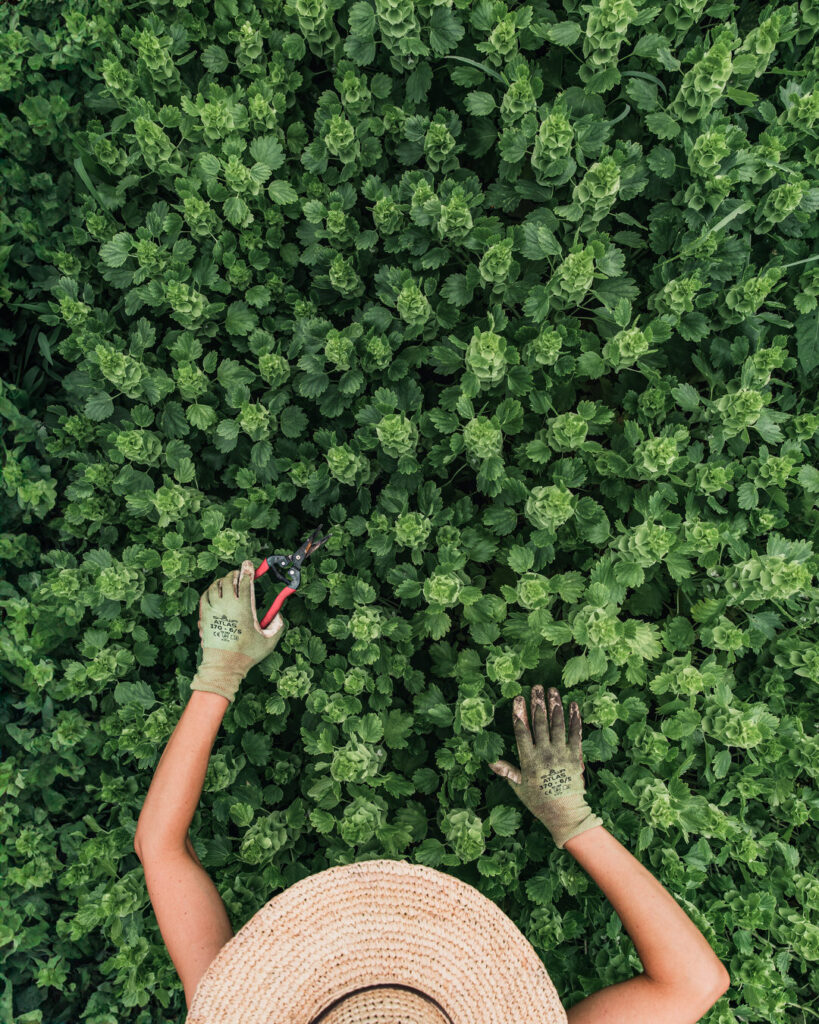
A happy customer can be one of your biggest promoters. However, an unhappy customer can also have a considerable impact. And get this? As the business owner, you may not even be aware of it.
According to this study from Wharton, only 6% of shoppers who experienced a problem contacted the company, but 31% went on to tell friends, family or colleagues. Furthermore, 48% of respondents reported avoiding a store in the past due to someone else’s negative experience. For those who had encountered a problem themselves, 33% said they would “definitely not” or “probably not” return.
Um what? The story had more of an impact than the experience itself!
Postharvest Tricks = Longer Vase Life = Happy Customer
This is why we do everything we can to ensure a great customer experience, from seed to sleeve. Compared to traditional florists, flower farmers have the advantage of a more direct path to customers and control over the process. Master harvest skills to deliver the best-quality product.
Below are general harvest guidelines, but different crops and cultivars have unique needs. For example, some flowers should be cut at “cracked-bud” stage, while others must be harvested more open. Some flowers are stored wet, while others should be stored dry.
Over the years, I’ve collected the optimal harvest and postharvest needs for over 70 cut-flower crops. I’ve finally compiled them all into one cheat sheet. These tricks and tips are from the latest data, research, leading experts, and my own personal experience. You can find that here or in the download section of the dashboard.
Read on for the best general practices for harvesting cut flowers, as well as the process we use on our farm.
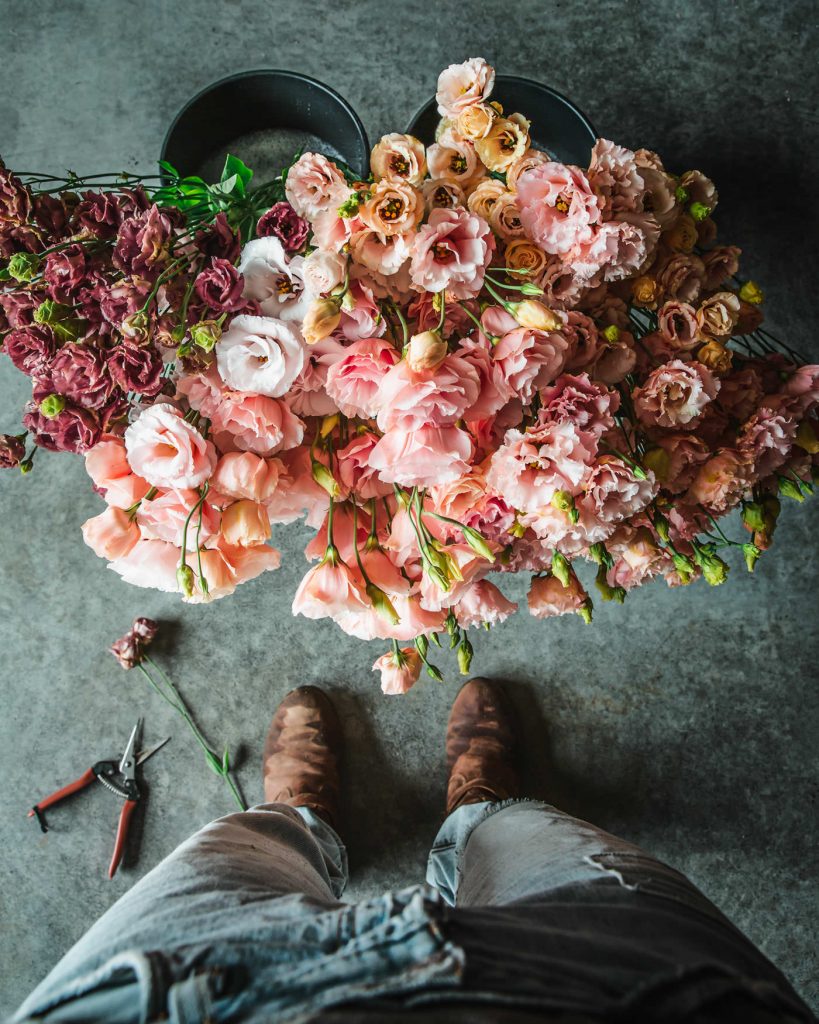
Clean & Proper Containers
Bacteria, yeast, and fungi in water or on plant material can proliferate in containers, restricting water absorption and leading to shortened vase life. Dirty buckets exasperate the issue, while clean containers slow this process down. While microbial growth can be slowed with commercial solutions, these cannot overcome poor sanitation.
Thoroughly clean buckets between each use, including the inside and outside. Clean the outside to avoid contamination when stacking buckets. Good rule of thumb: Would you drink water from the bucket? If not, they are not clean enough.
Buckets and containers should be cleaned and ready before harvest. Complete this task during down times or the warmest parts of the day. No one wants to waste cool hours cleaning buckets instead of harvesting because they’re all dirty (guilty).
Not only do you want buckets and containers cleaned ahead of time, you want the proper ones ready to go. There’s nothing worse than cutting flowers and having the wrong type of container! Think: harvesting a bunch of snapdragons and not having a tall enough bucket to support the stems.
We primarily use 10L buckets for most flowers. We’ll also use 5L buckets for shorter stems/smaller harvest or 5-gallon buckets for tall stems like snapdragons. See our Field & Harvest Inventory Checklist for a full list with links. We use bulb crates for flowers that are harvested and stored dry like tulips.
Clean & Sharp Tools
Clean tools are just as important as clean buckets. And just as important as clean tools are sharp tools! Sharp tools make harvesting easier and ensure a clean cut. Dull tools not only unnecessarily wound delicate plant material, damaged tissue can also produce wound-induced ethylene. Both will reduce vase life.
Water
This might sound obvious, but if you’ve ever cut flowers in the garden, you know things can get carried away! Bring fresh water when harvesting flowers to allow stems to start drinking right away. Plant material must maintain sufficient water levels for cellular processes. If flowers are allowed to wilt, they may bounce back but it affects vase life.
Fresh-cut flowers drink water fast, so make sure the stems sit below the water line. Always refresh the water prior to storage. While not all species respond the same to commercial solutions, a hydrating solution can be very beneficial at harvesting. See Cheat Sheet for specific recommendations.
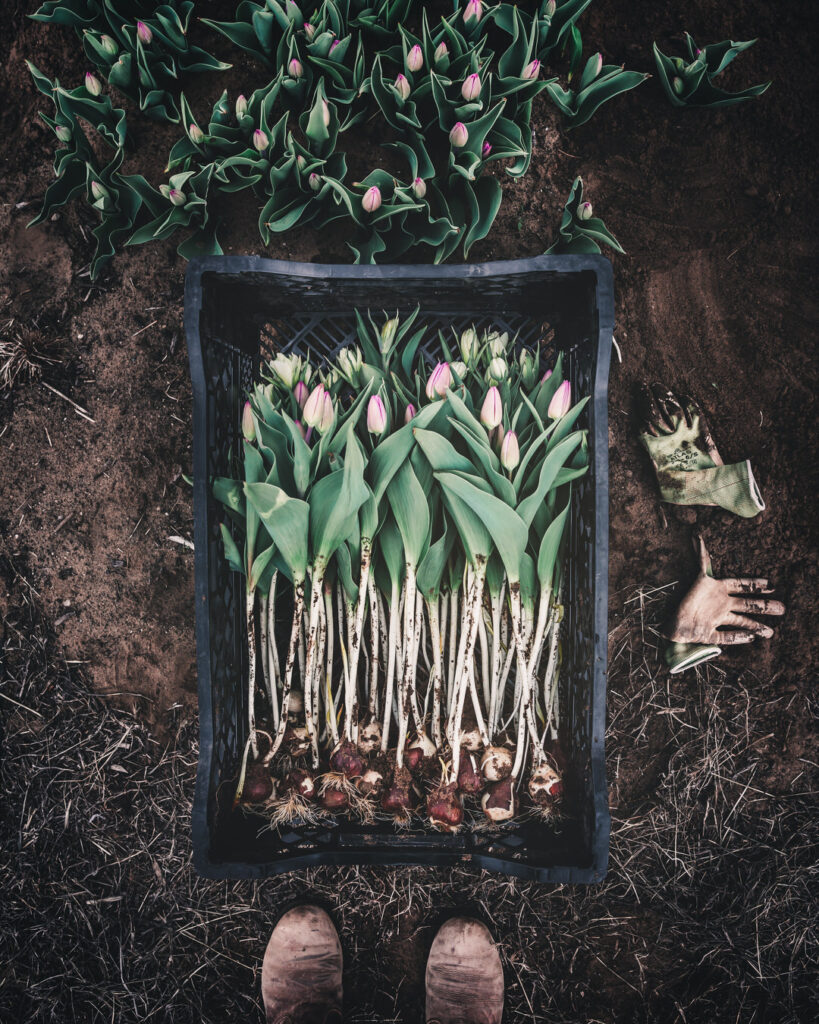
Harvest Time
Harvest during the coolest parts of the day to avoid problems caused by high temperatures. High temperatures increase respiration and carbohydrate loss. Carbohydrate depletion shortens vase life (which is why flowers often benefit from flower food).
The ideal time may vary, but morning harvests are generally recommended. Not only is it cool, but this is also when plants have the highest water content. Avoid harvesting on especially-dewy mornings, especially those crops susceptible to Botrytis.
Interestingly, harvesting later in the day allows for higher carbohydrate status. Recent studies have shown that afternoon harvest increased vase life of marigolds and zinnias (not stored) and lisianthus and marigolds (stored for two weeks).
When demand is high, sometimes harvest happens throughout the day. This is especially true for flowers that open quickly, like roses and tulips. Postharvest Handling recommends that if you like a specific variety but the vase life is not great, try harvesting at a different time of day. If you know you need to store flowers for a longer period, try harvesting later in the day.
Harvest Stage
Harvest crops at the optimum stage for the best postharvest life. Proper stage varies among species, and each has its own special tricks.
For example, peonies are best harvested when buds just show color, while dahlias should be harvested when the blooms are at least 3/4 open (or they’ll fail to open at all). But if you were to harvest a peony at the same stage as a dahlia, it could drop it’s petals before it even makes it to your customer! Dahlias must be stored in water, but peonies can be stored much longer out of water (2+ weeks)!
Keeping this straight for each crop can be challenging. While plant profiles include detailed harvest and postharvest information, I like to be able to look things up quickly. That’s why I made the cheat sheet 🙂
Generally speaking, though: Crops that are harvested too young will either not open or partially open, not develop true flower color, and/or wilt. It’s always best to harvest flowers before they’ve been pollinated. If cut-flower crops are harvested too late, vase life is shortened. This may not be immediately apparent, it’s usually the customer who finds out. As noted earlier, that customer may not tell you!
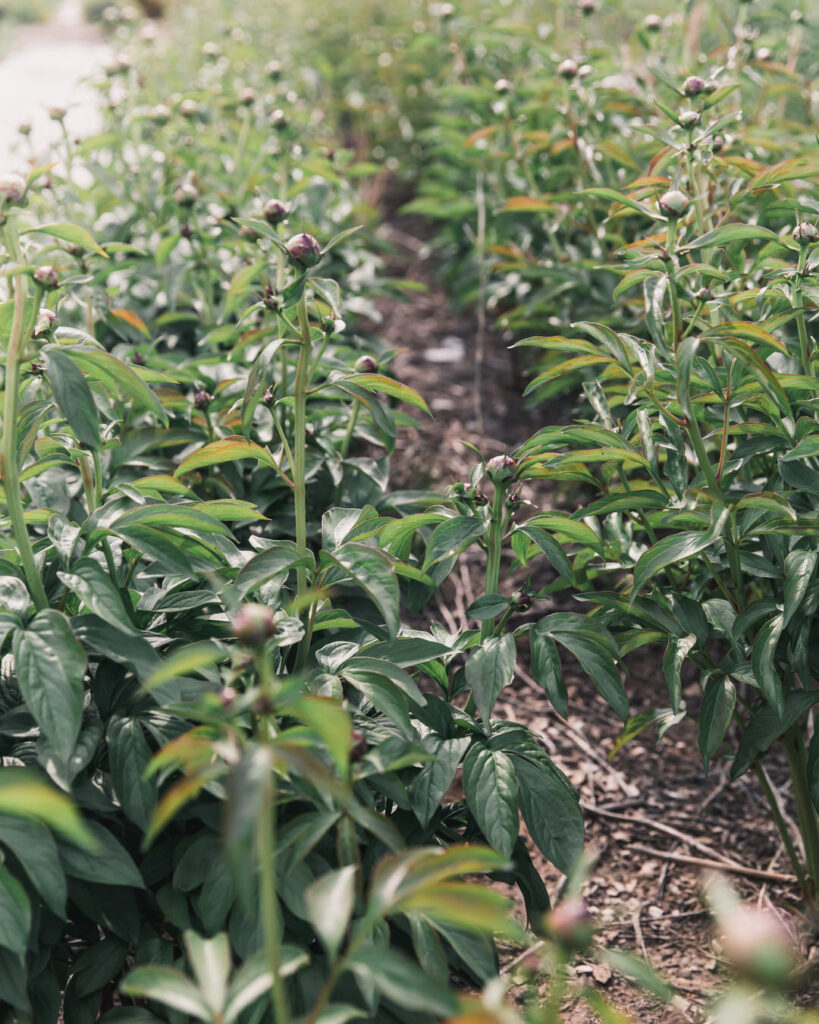
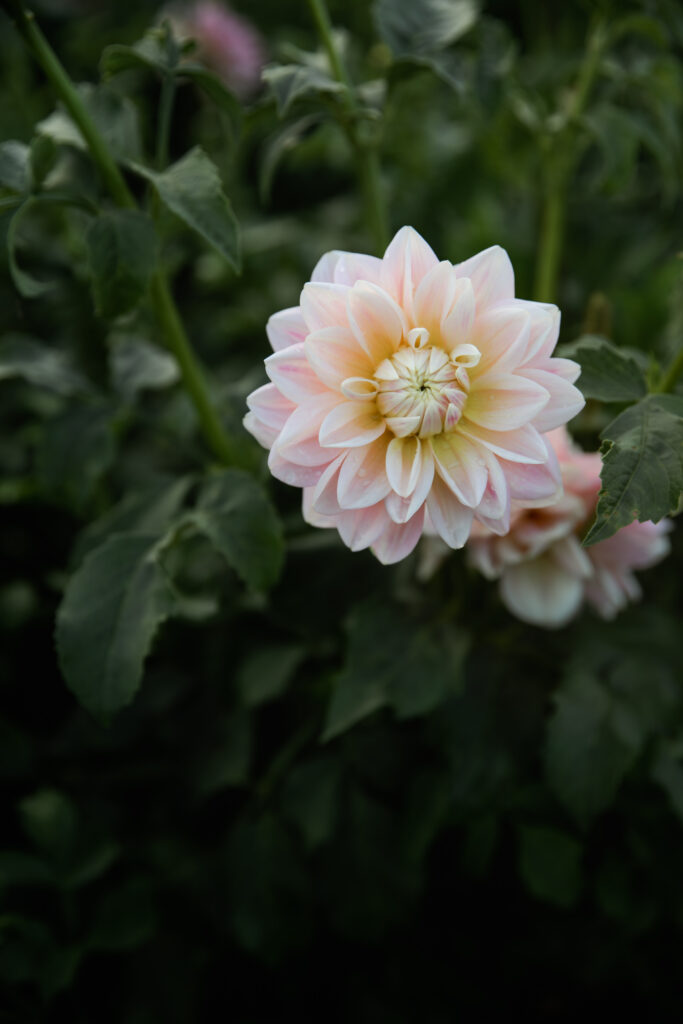
Harvest Method
Cut stems at the proper stage with clean, sharp tools. Strip lower leaves, especially those below the water line (as these will quickly decay and increase bacteria buildup). Consider single cut vs. multiple cut methods based on the species.
Single Cut VS Multiple Cut
Some species only produce one stem for cutting and the plant is done (e.g., tulips and single-stem sunflowers). Other plants produce multiple harvestable stems throughout the season (e.g., cosmos and branching sunflowers).
Flower farmers usually separate these into three categories. You may see a variety of names, but I use: Single Cut (SC), Multi Cut (MC) and Come and Cut Again (CC). CC are the most-productive, while MC are less productive but will allow for more than one, single cut. These are included in the Cheat Sheet.
For SCs, stems cut stems as long as needed, even down to the ground. They won’t be producing any more blooms, afterall. For MCs and CCs, cut once stems are long enough to leave enough nodes to allow additional stem production (generally, 2 to 4 nodes). Don’t be afraid to cut deep, this stimulates growth! It’s not unusual to remove the first few blooms for MCs and CCs because the stems are too short.
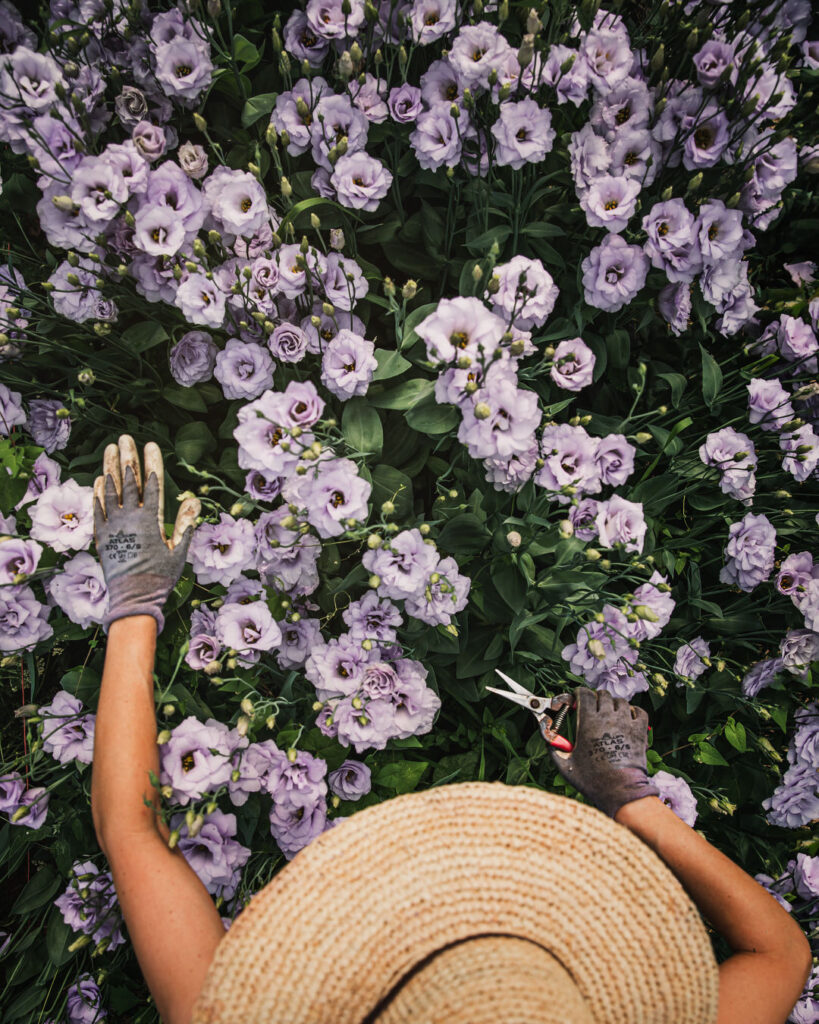
Immediate Handling
Move flowers to a cool and dark place in deep water (unless storing dry). Allow to rest overnight (or at least 4 hours) prior to designing. Often missed by newbies, this step allows flowers to hydrate. Prior to designing, recut stems at a 45-degree angle.
Keeping plants dark and cool stalls photosynthesis, reduces respiration, and preserves carbohydrates. These prolong stem quality and vase life. We’ll dive deeper on postharvesting tricks and techniques in another post. However, once again, each species responds differently.
In general, many species store best just above freezing (32 to 34F (0 to 1C)). However, most sources advise keeping temperatures between 35 and 38F (2 to 3C) because of fluctuating cooler temperatures and cold spots. How well do you trust your cooler? On the flip side, some species are sensitive to cold and must be stored even warmer. See Cheat Sheet for specific recommendations.
Avoid Ethylene
Minimize exposure to ethylene during both harvest and postharvest. Ethylene is a naturally occurring plant hormone that regulates a number of plant processes. It’s also the most commercially-produced organic compound in the world, used in many industrial applications.
No other air pollutant causes a greater range of damage symptoms than ethylene gas. While symptoms vary, they include malformed leaves and flowers, drooping and curling of leaves, abortion of buds, bud and leaf abscission, and drastically-reduced vase life.
Sources of ethylene include things like vehicle exhaust, ripening fruit and vegetables, decomposing plant material, Botrytis infections, space heaters, and cigarette smoke. In general, do not store flowers with fruits and vegetables.
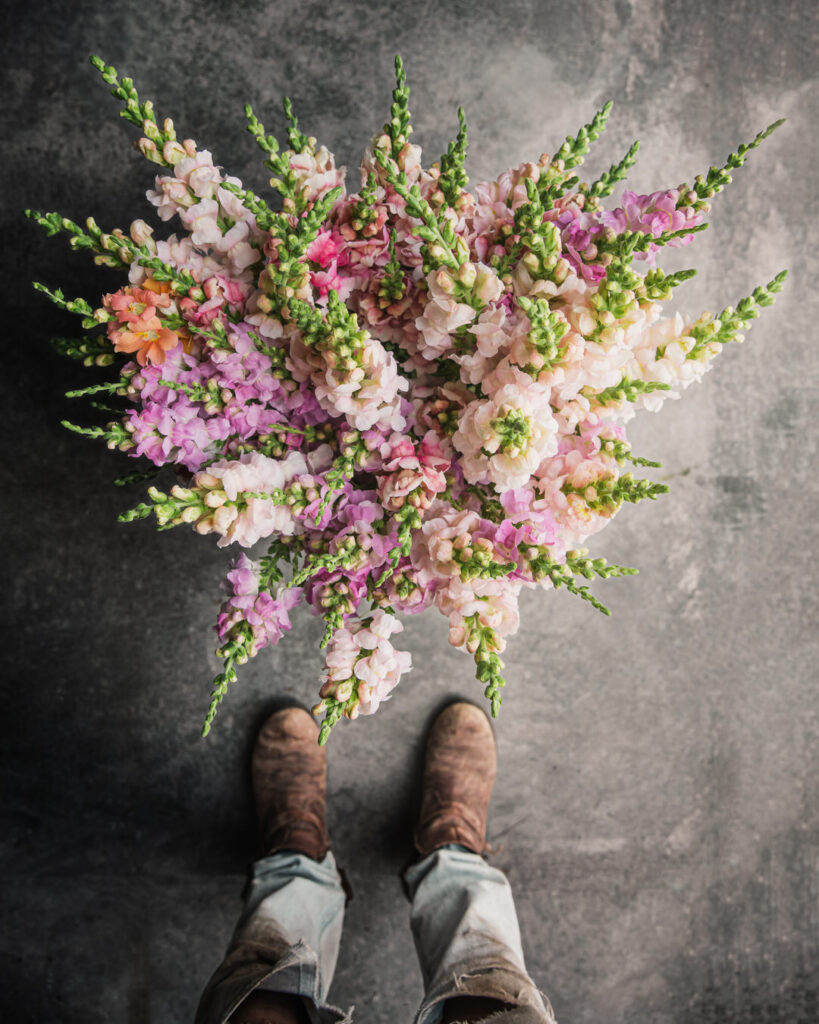
General Process at PBF
While we grow everything organically, we are not certified organic on our farm. We do use postharvest solutions (for now). I first learned about these through Floret/Erin Benzakein, and I do find they make a difference. It’s important to call out, though, that the use of commercial solutions, though industry standard, are not organic.
Our customers have communicated that they prefer this balanced approach of gentle growing practices combined with a better-quality and longer-lasting product. That said, I think the industry has a lot of opportunity for improvement here. As someone who uses Dr. Bronner’s for everything in her home, I’d love to conduct some real-world experiments with plant-derived solutions. If you have any suggestions, please share!
So, what does our harvest process look like?
The first thing I do is look up the specific variety I’m harvesting! I make sure my memory is correct on its harvest/postharvest technique. This is my north star and I will always deviate from the normal process with whatever is optimum for that particular plant.
In general, though, I either harvest in the mornings or in the evenings, usually both. I’ll avoid dewy mornings, opting for later morning or early evening. When it’s tulip or peony season, and those babies are coming on like a flash, we might harvest 2 to 3 times a day. The reality more times than not is that I harvest when I’m able to. The only time I avoid it is during really hot, sunny afternoons. In the midwest, our temperatures can fluctuate drastically, so I’m always watching the weather.
I’ve gotten into a groove of harvesting things that are more wilt-prone first, during the cooler mornings (noted in the cheat sheet). When I’m crunched for time, flowers like zinnias and lisianthus wait until late afternoon/early evening. This was born partially out of instinct, but mostly necessity. I was pleasantly surprised to later come across the information regarding afternoon harvests and carbohydrates. I had always felt like lisi didn’t blink an eye being harvested later in the day. It turns out there might be some benefit behind that!
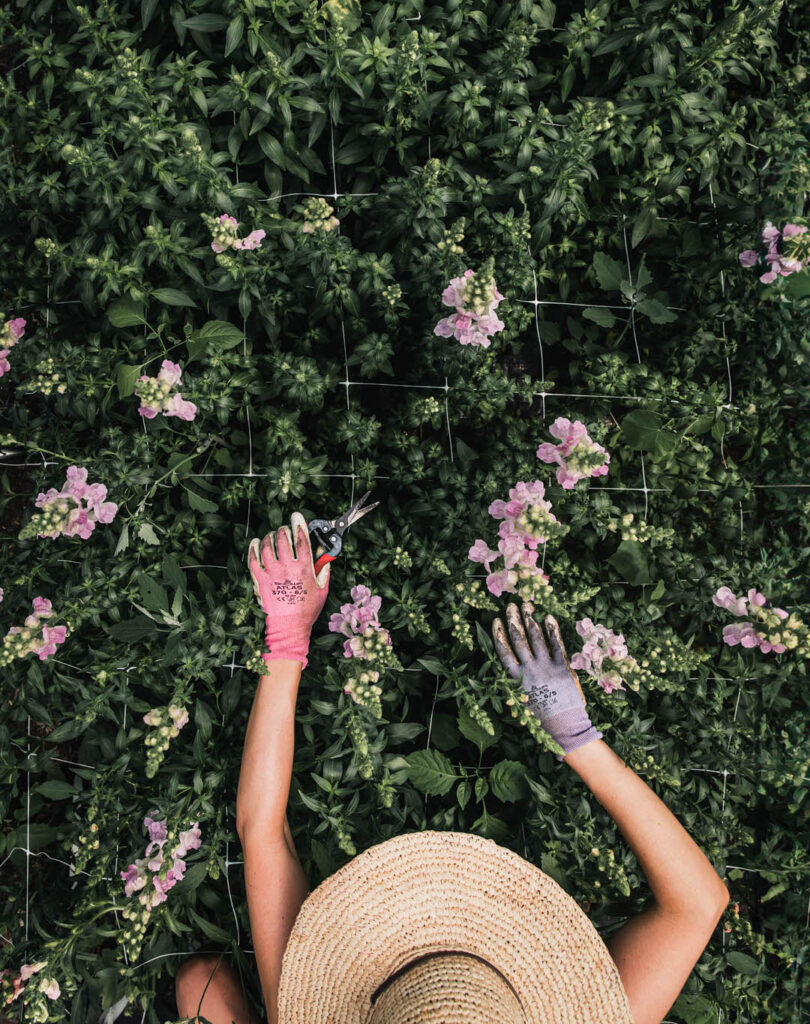
Postharvest Process
For commercial solutions, species-specific recommendations trump all else. I’ll dive deeper on this in another post. But typically, I have clean buckets in the back of the gator and give each bucket a pump of hydrating solution before filling it with cool water. I bring these with me into the field and cut flowers directly into them.
Depending on the variety, I either let them cool down in the shop or move them directly into the cooler. I move stems to fresh buckets of water with holding solution a day later. I’ve cut some varieties like sunflowers and lisianthus directly into holding solution, and anecdotally have not noticed a difference. Our customers always rave about these two flowers’ vase life! I use Quick Dip and/or slow-release chlorine tablets per recommendations. We keep our cooler at 35 to 38F (2 to 3C) in spring/early summer and 38 to 40F (3 to 4C) in late summer into fall. Broken record: see Cheat Sheet for specific recommendations.
Additional Notes
As a side note: Optimum harvest stage doesn’t always make for the most-engaging photos. While they can be great for customer education, what typically entices them to buy are seeing lush flowers (what they’re buying, their end product). I typically use extra flowers or those that missed their harvest window as opportunities for photos (aka Marketing Material).
See our Field & Harvest Inventory Checklist for a full list of my favorite harvesting tools with links.
cLICK FOR Comments +